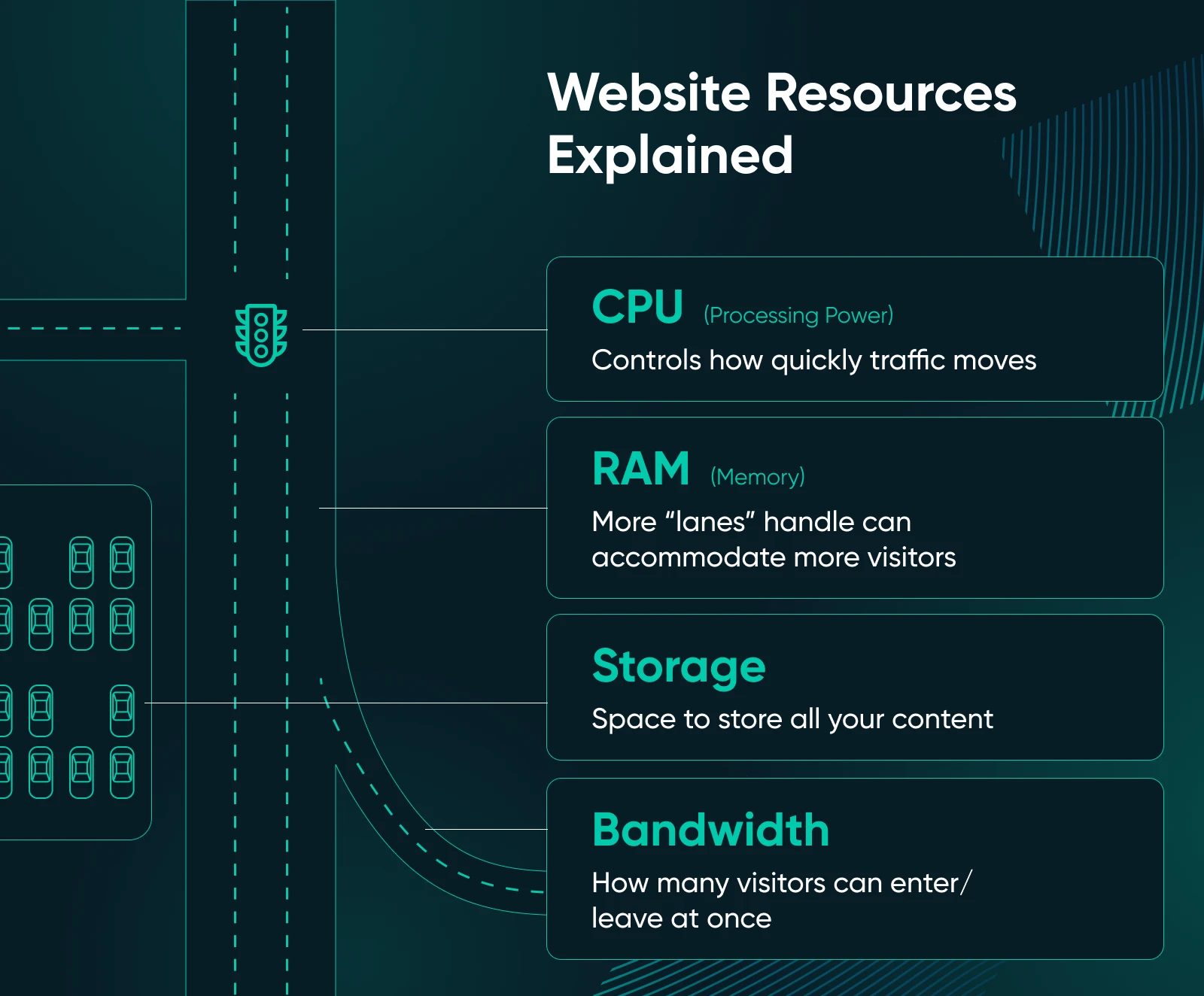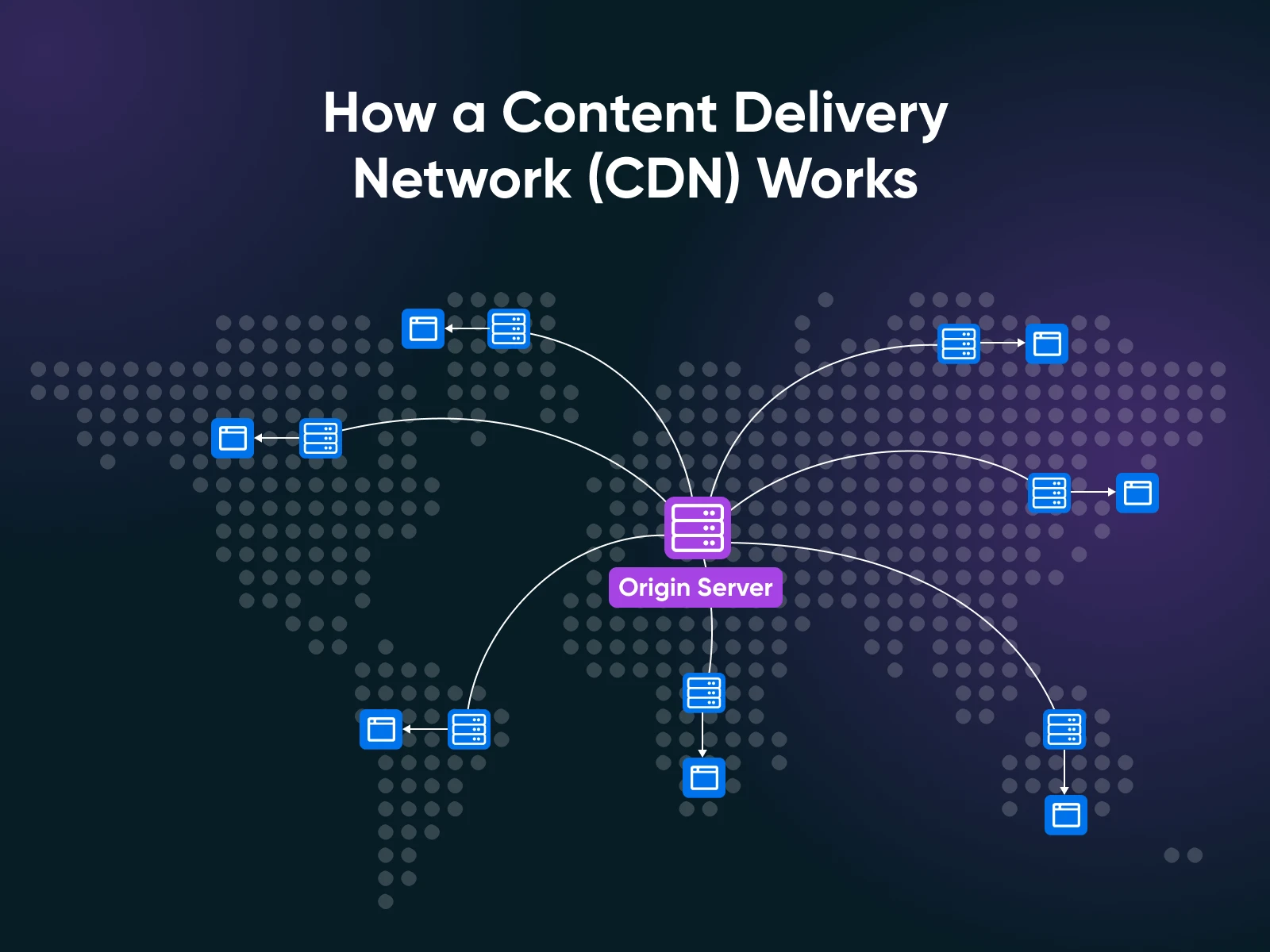You lastly did it. A weblog put up is blowing up. A product launch is getting clicks. Your marketing campaign is driving site visitors like by no means earlier than. That is the second you’ve been working towards —and your website is… loading… nonetheless loading…fully down.
Going viral is nice. Until your website faceplants in entrance of 1000’s of individuals as a result of it could actually’t deal with the site visitors.
When you’re internet hosting on a VPS and gearing up for a giant site visitors occasion, now’s the time to ask: “Can my server deal with this?” The excellent news is, with the appropriate preparation, the reply generally is a assured sure.
On this information, we’ll stroll you thru the whole lot you must know to scale your VPS for site visitors surges — with out panic, guesswork, or praying to the server gods. Let’s dive in.
What Is a VPS (and Why Does It Matter When Visitors Spikes)?
A Digital Personal Server (VPS) is a kind of webhosting that offers you devoted sources on a server shared with different customers. In contrast to shared internet hosting, the place web sites compete for a similar sources, a VPS makes use of virtualization expertise to create remoted environments — providing you with extra management, higher efficiency, and the flexibleness to scale your website as wanted.
In different phrases, you get devoted slices of sources (reminiscence, CPU, storage) that aren’t shared with different websites —versus shared internet hosting, the place your neighbors can hog the server, that means if one website has an enormous spike in site visitors, it could actually decelerate everybody else. With a VPS, your website lives in its personal remoted “container” with assured sources, so different web sites’ site visitors surges received’t immediately have an effect on you.
Why is that this necessary for scaling? As a result of whereas a VPS provides you extra management and stability, you continue to have finite sources allotted to your website.
In case your website all of a sudden wants extra CPU or RAM than your plan consists of, it could actually nonetheless endure. However VPS plans are often very scalable — you may simply add extra RAM, CPU, or disk area as your website grows. In different phrases, a VPS is constructed to develop with you.

Proactively scaling your VPS earlier than a giant site visitors occasion means rising these sources (and optimizing your setup) forward of time, so your website stays clean when the guests pour in.
It’s type of like getting ready a restaurant for a giant dinner rush by including extra tables and workers and prepping components forward of time. You don’t wish to wait till clients are crammed within the foyer to react.
Step-by-Step: How To Scale Your VPS for Visitors Surges
Now, let’s roll up our sleeves and get into why you’re right here —that is the way you scale your VPS should you anticipate your website will want extra of these sources within the close to future.
Step 1: Monitor Your Present Visitors and Set a Baseline
You may’t scale what you don’t measure. Begin by auditing your present site visitors to ascertain a efficiency baseline. Use your analytics to evaluation what number of guests you get on a standard day and what your peak site visitors appears like. When you use a DreamHost managed internet hosting plan (together with VPS), now you can see built-in site visitors analytics on the Visitors Dashboard, seamlessly built-in into the “Handle Web sites” part of your buyer management panel.
For instance, discover your common every day guests and be aware the instances or occasions when site visitors spikes —possibly throughout previous gross sales or campaigns. Figuring out your “regular” versus “busy” site visitors ranges will enable you quantify how large an upcoming surge may be.
Why do that? When you usually have 500 every day customers and anticipate 5,000 throughout a launch, that’s a ten× bounce —a big pressure should you’re unprepared. By figuring out patterns (say, site visitors doubles day by day at 8 p.m., or tends to spike proper after you ship a publication), you may plan server sources for these hundreds. You wish to set up a site visitors baseline so you may acknowledge a real surge and scale accordingly.
Professional tip: Arrange real-time analytics or server monitoring now. This can provide you with a warning if site visitors begins ramping up unexpectedly earlier than the large occasion.
Step 2: Select a Versatile VPS Internet hosting Plan
Subsequent, consider your internet hosting plan. Is your VPS plan versatile sufficient to deal with a spike?
Not all VPS hosts are created equal —you’ll need one that allows you to simply dial sources up or down. Test in case your supplier presents fast upgrades (and even computerized scaling) for CPU, RAM, and bandwidth. The objective is to keep away from being caught on a plan that may’t develop if you want it.
In case your present host limits how briskly you may scale, contemplate migrating to at least one that makes a speciality of scalability (many cloud-based VPS suppliers permit near-instant useful resource changes). Some VPS internet hosting plans even have auto-scaling, that means if site visitors will increase, the system can allocate extra sources on the fly to maintain your website secure.
At minimal, ensure you can manually improve your VPS plan shortly (inside minutes or hours, not days).
Step 3: Allocate Adequate Sources
Now it’s time to provide your VPS these additional lanes of site visitors we talked about. Properly earlier than the surge hits, allocate extra server sources to deal with the load. This would possibly imply upgrading your VPS so as to add RAM, vCPUs (digital processors), or rising community bandwidth limits. A wise rule of thumb is so as to add a wholesome buffer on prime of your anticipated wants —roughly 50% additional capability as a cushion.

For instance, in case your baseline monitoring from Step 1 suggests you’ll want round 2 GB of RAM to deal with regular site visitors, contemplate scaling to ~3 GB RAM for the surge, simply to be secure. This margin provides you sufficient wiggle room to ensure you received’t max out sources if the spike is greater than predicted.
Professional tip: It’s much better to have a bit an excessive amount of capability than to observe your website sluggish to a crawl or crash as a result of it ran out of RAM.
Step 4: Implement Caching to Scale back Server Pressure
Need a fast win for scalability? Allow caching in your website. Caching shops copies of your website’s pages and content material in order that repeat requests may be served shortly with out your VPS doing all of the work every time.
In follow, when caching is enabled, the primary customer generates the content material (for instance, operating PHP and database queries for a web page) and a static model is saved. Subsequent guests are then served that pre-built web page from the cache, so your server doesn’t need to crank out the identical web page time and again.
The outcome: quicker load instances for customers and far much less stress in your VPS’s CPU and database.
There are a number of forms of caching to think about:
- Web page caching shops full HTML pages.
- Object or database caching shops frequent question outcomes.
- CDN (Content material Supply Community) caches static recordsdata (pictures, CSS, and so forth.) on servers all over the world.
A simple path to take is putting in a caching plugin for WordPress. Your host may supply built-in caching. By caching content material, you keep away from overworking your server throughout excessive site visitors and might deal with much more guests with the identical VPS specs.
Professional tip: Utilizing a CDN alongside caching offloads much more site visitors out of your VPS, for the reason that CDN will serve pictures and different recordsdata to customers, leaving your server free to deal with the more durable duties.

Step 5: Think about Load Balancing if One Server Isn’t Sufficient
What should you anticipate a large surge that one VPS alone can’t deal with, even with extra sources and caching? It may be time to suppose past a single server. Load balancing is a way the place you employ a number of servers to share the site visitors load.
Primarily, you place a load balancer in entrance of your VPS that distributes incoming guests throughout two or extra servers, stopping any single machine from getting overwhelmed. This setup can drastically improve the quantity of site visitors you may deal with by leveraging a number of VPS cases in tandem.
A load balancer would possibly ship half your guests to “Server A” and half to “Server B” (and even spin up extra servers if wanted). This not solely will increase capability but additionally provides redundancy — if one server goes down, others can decide up the slack, enhancing reliability.
Know that you simply usually received’t want load balancing except you anticipate actually excessive site visitors or want excessive availability. It does introduce extra complexity (and price).
But it surely’s good to grasp the idea: when one VPS isn’t sufficient, you may at all times add extra servers behind a load balancer so as to add nearly limitless capability. Some internet hosting suppliers supply straightforward load balancing or cloud cases that auto-scale out —in case your large occasion goes to be big, that is an choice to debate together with your host.
Step 6: Take a look at Your Setup
Don’t wait till launch day to seek out out in case your scaling efforts labored. Simulate a site visitors surge in your website to see how they maintain up.
That is generally performed through load testing or stress testing instruments. These instruments ship numerous simulated guests or requests to your web site to imitate a flood of actual site visitors. The objective is to push your VPS to the restrict in a managed manner and observe what occurs.
Throughout load testing, monitor your server’s response instances, CPU/RAM utilization, and whether or not any errors happen.
Do pages begin failing at a sure variety of concurrent customers? Is the database choking on too many queries?
A take a look at would possibly reveal, for instance, that your website slows down drastically past 1,000 simultaneous customers — indicating you might have to additional optimize or add sources. It’s significantly better to find these bottlenecks now as a substitute of in the course of the precise site visitors spike, when actual clients are on the road.
There are various instruments (each free and paid) to do that: Apache JMeter, BlazeMeter, Loader.io, and so forth.
Run a number of exams approaching the site visitors ranges you anticipate. This can determine any weak hyperlinks in your setup (like a specific plugin or script that crashes beneath load, for instance). You may then repair these points —whether or not it’s tweaking database indexes or additional boosting your sources —earlier than you get large surges in actual site visitors.
Step 7: Monitor Your VPS in Actual Time Through the Surge
The day of your marketing campaign or launch is right here!
As guests begin flocking in, ensure you’re watching your VPS metrics in actual time. Nearly all VPS platforms have monitoring instruments or dashboards (and if not, third-party monitoring instruments can fill the hole). Control your CPU utilization, reminiscence consumption, disk I/O, and community site visitors in actual time.
You could wish to arrange alerts too. For instance, get an e-mail or textual content alert if CPU utilization stays above 90% for quite a lot of minutes, or if reminiscence is operating low. These can act as an early warning system so you may take motion (like allocating extra sources or optimizing one thing on the fly) earlier than you run right into a probably catastrophic situation.
By monitoring actively, you keep away from flying blind. Actual-time analytics additionally allow you to validate that your preparations are working, and it’s truly fairly enjoyable to observe the numbers if the whole lot is operating easily.
And if one thing begins breaking, you’ll be glad you observed it instantly. Bear in mind, you may’t handle what you don’t monitor.
After the Surge: Assessment, Proper-Dimension, and Enhance
Congratulations on making it by your viral second! As soon as the site visitors surge subsides, don’t simply pat your self on the again and overlook about it. It is a golden alternative to evaluation and be taught from the expertise.
- Begin with a post-surge evaluation: Dig into your server logs and efficiency metrics to see how issues went.
- Establish any bottlenecks or errors that occurred when site visitors was at its peak: For instance, did the CPU hit 100%? Did response instances spike wherever? Perhaps one in all your pages nonetheless loaded slowly on account of an uncached factor. Analyzing this information will pinpoint what labored effectively and what may nonetheless be improved.
- Collect loads of suggestions: should you had crew members or customers report points (“Checkout was sluggish” or “the positioning timed out for me at 1 p.m.”), take be aware. All of this info helps you refine your plan for the long run. Alter your infrastructure and configuration based mostly on what you discovered.
When you discovered you over-provisioned (for instance, you doubled your RAM however solely used 60% of it), you would possibly scale the VPS again down barely to avoid wasting on prices till the following large occasion. However, should you had been close to the boundaries, you would possibly resolve to improve to a bigger VPS plan completely, so that you’re prepared for development.
That is additionally an ideal alternative to replace your contingency plans. Did your alerting and monitoring cowl the whole lot? Do you must add a database reproduction or tweak your caching settings subsequent time?
Use the expertise to enhance your playbook for future site visitors surges: each deliberate and sudden.
Scale Confidently With the Proper Internet hosting
By now, you need to really feel extra assured about scaling your VPS to deal with site visitors surges. We’ve coated the whole lot from understanding your baseline, beefing up sources, intelligent caching tips, to testing and real-time monitoring.
The important thing takeaway? Preparation beats panic.
Whenever you take these proactive steps, you’re not simply hoping your website will survive. You know it should. So, the following time your advertising marketing campaign pays off or your put up goes viral, you may have fun the site visitors spike as a substitute of dreading it.
When you’re searching for a internet hosting accomplice that makes this complete course of simpler, contemplate scaling with DreamHost. DreamHost Managed VPS Internet hosting presents devoted sources and a scalable, versatile platform designed for rising websites. With 4 plans to select from and options like built-in analytics, free WordPress migrations, expandable RAM and storage, and extra, you may belief DreamHost to assist your website carry out beneath strain.

Take Cost with Versatile VPS Internet hosting
Right here’s how DreamHost’s VPS providing stands aside: 24/7 buyer help, an intuitive panel, scalable RAM, limitless bandwidth, limitless internet hosting domains, and SSD storage.
Did you get pleasure from this text?

